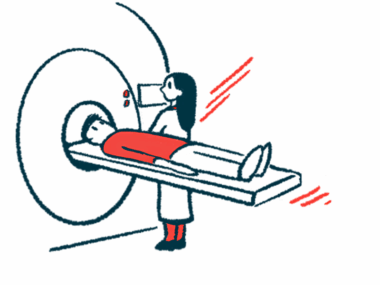To obtain an MS diagnosis, I had to overcome my MRI phobia
Despite my fears, these techniques helped me relax during the scan
Written by |

Many years ago, I had an MRI scan on my right knee, and it didn’t go well. In fact, panic set in when I first looked at the scanner, as the tube seemed small. After I lay down and the operator started moving the table, I faced a fight-or-flight moment. The winner was — you guessed it — flight. I had to be removed because my body wouldn’t stop shaking.
After contacting the doctor about the numbness and pain in my legs, my back pain, and the sensation of my chest being squeezed, another scan was ordered. But that, too, failed.
Later I needed an MRI of my brain after my general practitioner mentioned that I possibly had multiple sclerosis (MS). I realized I could get answers only by finding a way to overcome my phobia, so I began researching techniques to ease the worry caused by enclosed spaces. I was determined to see the test through and find out exactly what was happening in my body.
Strategies for a successful scan
As I walked into the imaging room, my nerves kicked in quickly — but my first step in taking back control was to move to the machine and put my head inside. After a few seconds of coming to terms with the space there, I started talking with it. I asked the machine if it was cool for me to get an MRI scan and explained that it was a necessary part of the diagnostic process. I know it sounds wild, but having this chat put me at ease.
Next on my list was handing a CD of music to the medical team. I’d chosen an ’80s rock compilation, and technicians had agreed to provide me with headphones so I could listen to it as one way that I might stay calm.
Then it was time for me to lie on the bed. I felt myself getting worried, but knowing I’d already seen inside the machine made the concern seem manageable. Once the bed started to move, a technician asked if I were OK to continue. I felt that I was, so they put me into position.
At this point, fear began to take hold, but then the most calming thing happened: A team member went around to the back and gently touched my head. It made me feel that the scanner wasn’t all that long, and that my head was very close to the opening. That topped off all the other strategies I’d used to relax, and my fear vanished.
Once the scan started, staff members told me how long each portion would take. The final strategy I tried was to trick myself during each scan. I’d count the seconds deliberately slowly, so that a four-minute scan would feel like three minutes.
Between the slow counting and all my other techniques, the whole experience felt almost relaxing. I sometimes had to stop myself from singing along to the music.
Knowing how scary it can be to lie in those machines, I’d love it if even the smallest part of my story helped someone overcome a similar MRI phobia. Let’s be honest: When living with MS, we end up becoming good friends with those scanners.
Note: Multiple Sclerosis News Today is strictly a news and information website about the disease. It does not provide medical advice, diagnosis, or treatment. This content is not intended to be a substitute for professional medical advice, diagnosis, or treatment. Always seek the advice of your physician or other qualified health provider with any questions you may have regarding a medical condition. Never disregard professional medical advice or delay in seeking it because of something you have read on this website. The opinions expressed in this column are not those of Multiple Sclerosis News Today or its parent company, Bionews, and are intended to spark discussion about issues pertaining to multiple sclerosis.







Kristin Hardy
Hi Mike, thanks for your column. My tricks are to get to bed very late the night before – I have been known to fall asleep during an MRI, believe it or not. I close my eyes when I am on the bed out in the room and keep them closed the entire time. The machine Has a fan that sends fresh air flowing past you when you're in the tube, so it feels like you're out in the room even though you're not. Keep your eyes closed and pretend that you are. Counting is good, meditating, reciting the streets in the neighborhood where you grew up, whatever gives you something to concentrate on (I recite the periodic table in the names of the countries in the world). Worst case scenario, most facilities offer sedatives for people with claustrophobia..
Thomas C. Howard
Valium.
Heather
Definitely eyes closed and a technician that tells you how long each segment will last. Also a 3 Tesla machine is faster and more powerful. I no longer receive contrast because of a reaction to it so the MRI time is shorter.
Beth Dulaney
It is comforting to know other people have this problem! I also use these techniques to get through this test! I still hate it! It is a necessary evil, unfortunately! Grin and bare it, kiddo!